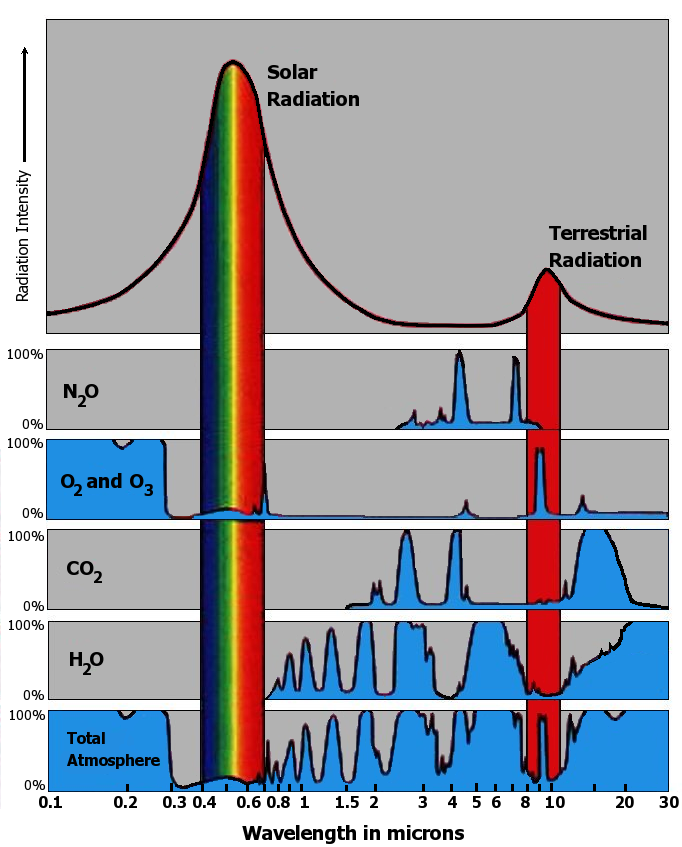If you have a good source for albedo simulations in urban settings or agricultural settings please let me know at info@climatebabes.com
The basic theory behind Albedo’s cooling effect is about Watt per square meter, W/m2. At the equator the sun delivers 1000 W/m2 of solar energy. This energy gets converted into heat or electricity or organic activity (chlorophyl and plant growth) and can even result in water splitting by rust when or other photon absorbing materials.
But if the surface the energy hits is reflective the photons get send back into space. Every surface has an absorption spectrum. If the surface has an albedo of 50% 50% of the solar energy gets send back, and for a surface of 1 m2 at the equator that means 500 Watt cooling for example. This also means 500Watt is absorbed and this raises the temperature of the surface.
All materials radiate photons, heat, infra red usually. The hotter a material gets the more it radiates. If the temperature of a material increases it will radiate more until all the energy that hits it will be either reflected or radiated. This can be at high temperatures, so if you make metal black and put it in the sun in high vacuum, it will start to glow after a while as hit has no way to shed its energy other than reflect or radiate (it can’t heat the ambient air).

Out atmosphere can absorb radiation of certain frequencies and not of others. As you can see in the picture above visible light is not absorbed much at all bt CO2. CO2 also does not absorb ‘terrestrial radiation’, heat radiating from the ground during the day or at night. This is considered a ‘window’ through our atmosphere by which we can cool our Earth at any time. If your surface radiates in that range (red bar above) it can actually remove heat from the equation altogether. It also seems that the ideal IR frequency range in dry regions (low humidity) is different than in wet ones.
Google Earth Engine
Google Earth Engine is a cloud computation facility that allows you to process satellite data on cloud servers. It has a nr of Albedo maps which will be explored. All have 500 meter resolution which may not be ideal for urban analysis of Albedo contributions.
in 2018 a paper came out with the title “A New Radiative Model Derived from Solar Insolation,Albedo, and Bulk Atmospheric Emissivity: Applicationto Earth and Other Planets” which should provide a good source for accurate calculations. The role of bulk atmospheric emissivity is important. What does it mean if there’s a haze, the water vapour may radiate heat, but this gets absorbed by other water right away. Also what do sandstorms do? Do they absorb heat which is then concentrated as the sand falls to the ground?